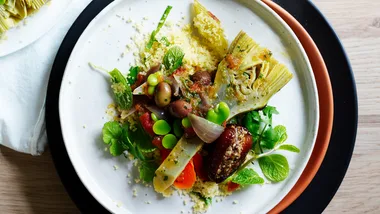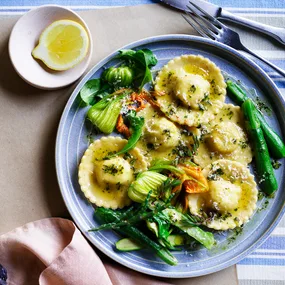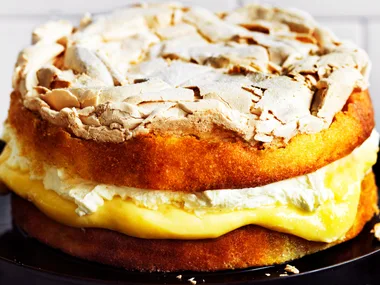“This recipe dates back to the Lombards, and only a few restaurants still prepare it. In our town it’s the restaurant that’s not listed, with no sign on the door, where diners come from all over. We collect the fine clay from the river Po and its tributaries. The clay casing seals in the juices while cooking to keep the bird moist and full of flavour. It takes a bit of time to build the case – but it’s worth it.”
Guinea fowl baked in clay
Ingredients
Method
Main
1.Wash fowl with cold water and dry thoroughly. Grease inside cavity with butter. Combine juniper berries with herbs and season to taste with sea salt and ground black pepper. Rub a teaspoon of herb mixture into the cavity and remaining mixture into the skin. Wrap pancetta, overlapping slices, around fowl, then wrap completely with greaseproof paper or foil.
2.Preheat oven to 200C. Wet clay and spread out to a 1cm-thick and 30cm-diameter piece large enough to enclose the paper-wrapped fowl. Place fowl onto clay and enclose completely in clay, sealing all holes and joins.
3.Place clay parcel onto a baking paper-lined oven tray and bake for 1 hour. Remove from oven, crack open the clay and discard, then open baking paper parcel, cut guinea fowl into 6 and serve immediately with fennel and radicchio salad.
Guinea fowl is seasonally available from specialist butchers. It may need to be ordered ahead. Potter’s clay is available from art supply stores, otherwise use an enclosed clay pot.
Drink Suggestion: Barbera or gutturnio (of the Colli Piacentini region).
Notes










